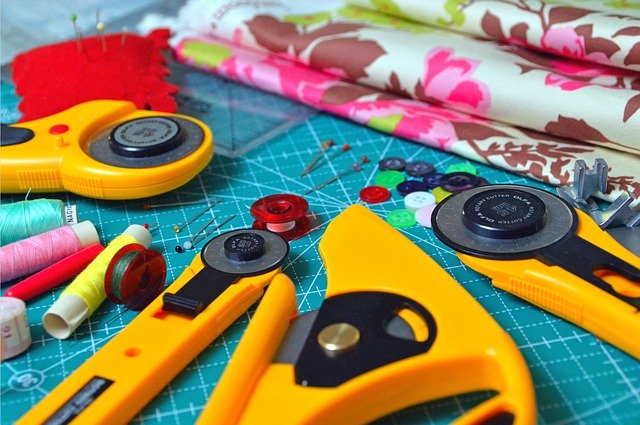In the past, quilts might have been made out of necessity but there was still a desire to add beauty to a homestead. Quilts were more than functional pieces; they were works of art. Over the years, interest in quilting has ebbed and flowed but recently it has become more widespread. Part of this is continuing family traditions of quilting for both artistic and domestic purposes. Another part of it is the rise of social justice and awareness.
A Brief History of the Art Quilt Movement
The 1960s and ‘70s saw more artists using their quilting skills to create works of art. They became so well known that art collectors began to recognize the relationship between abstract modern art and quilting. Jonathan Holstein and Gail van der Hoof, in particular, began collecting quilts from around the country and displaying them at the Whitney Museum in New York City. This public display exposed more people to the art of quilting and quilters were able to sell their works and make a profit.
It wasn’t just traditional quilters who participated in this movement. Many quilt artists had already been creating in other forms of media before turning to the quilt. This explains why more conventional quilting, such as drapery fabric quilts, took a backseat to quilts as a form of art.
The Rise of Art Quilt Guilds
Over time, art quilt guilds started to form and they hosted quilt fairs and shows for the local community. Even so, there were still lots of traditionalists who favored the more conventional quilts over the experimental art object ones.
As more and more guilds and organizations have been founded over the years, the art quilt movement has been making slow but steady progress. It’s not easy to change conventional perceptions of quilting but art quilters around the country are working hard to change people’s attitudes.
Today, many art quilters are playing around with dyeing, stamping, and painting their fabrics as well as adding embellishments such as beadings.
Quilting in the United States
Throughout the Plains States and the West, quilting often portrayed the political and social events of the time. Other quilters preferred to create designs and patterns that reflected their family history and lineage. Arizona is a state that has been home to Native Americans for thousands of years and continues to have one of the largest Native American populations in the country.
In particular, the Navajo Nation territory sits partly in northeastern Arizona and contributes to the area’s cultural and social character. As more and more people become aware of the fight for indigenous people’s rights, there has been a renewed interest in Native American culture and history. This has shown up in the art quilt movement too.
Navajo Quilt Patterns
One common Navajo quilt pattern is the Navajo star block pattern, which has a Southwestern feel to it. This is due to the Navajos’ presence in Arizona and New Mexico. The star block pattern is reminiscent of the desert skies of Arizona and the half-square triangle design shows up in other Navajo patterns as well. Often called the “warrior quilt,” the spread of this quilt pattern can be a way to get others interested and aware of Native American rights in the country.
The Rise in Arizona Quilting
As residents continue to learn about the struggles of indigenous people, the interest in preserving their culture is bound to increase. Regardless of whether they have Native American ancestry or not, more and more Arizona families want to show their support and spread awareness for indigenous people’s rights. Quilting is a great way to showcase the beauty, elegance, and fortitude of the Navajo and other Native American groups.
Quilts have been a means of spurring social change for decades. Causes have ranged from women’s rights to homelessness, the environment, and much more. Quilts not only provide physical warmth but they can help communities stand in solidarity with each other and the causes close to their hearts. It’s a quieter form of activism and one that can be passed down from generation to generation.
As Millennials are growing up and starting families of their own, it’s not surprising to see their age group, so dedicated to social change, instilling those values in their little ones. One way to do this is through quilting. Not only is quilting a great skill to know but it can be used for good and to raise awareness and funds. In this way, the art quilt movement stays alive and also takes on a more serious tone to bring justice to indigenous peoples and other societal problems.
The Challenge Continues
Native American families today face higher suicide rates (three times the national average) and about 25% of these families live in poverty. Fewer than 40% of Native American men have stable full-time employment and Native American schools are faced with a serious lack of funding and resources. As a result, nearly a quarter of Native Americans over the age of 25 don’t have high school diplomas. They continue to be racially profiled and inclined toward drug and alcohol abuse as well as sexual abuse and trauma. All of this happens as their traditions continue to disappear.
Quilting is one way that Arizona families — Native American or not — can continue to protect their heritage and spread awareness for these injustices. While social justice isn’t 100% responsible for the rise in quilting, this artistic tradition is helping to spread the word.




